Hi everyone, Dounia here.
As we're now into autumn, let me remind you of the theme for this end of year - NATURE!
This is a very open and versatile theme to allow our bloggers to play and create.
It is all about natural resources and treasures: shapely leaves, delicate flowers, bold berries… They can be the topic or main imagery of a project but we also urge you to think outside the box. Let's use actual natural materials! And not just as embellishments: Cork, bark, rocks or shells can be great substrates. You can weave straw, cut up leaves or use sand and gems for texture. Unusual stalks and seeds can be one of a kind marking tools. Hand gathered materials like ochres or rust can also be made into great colorants! Here is the word cloud we gave the team to try and spark their inspiration!
We also thought it would be the perfect theme to match with this quarter's featured designer: Alison Bomber! She goes by 'Words and Pictures' on most of her social media and it couldn't be a better description of her stamp collection with PaperArtsy. A lover of words, she started designing stamps in 2017, going on to create 23 beautiful sets of carefully curated thematic quotes.
In 2022, Leandra managed to persuade her to add some of her delicate sketched botanicals as well as timeless ephemera to the words, for even more versatility. This change of style has proved a great success. She now has 22 of those 'botanical style' sets, as well as a printed tissue paper (PT08) with a selection of her images in a larger scale.
As Alison is the focus of this topic, we thought you might like to get to know here a bit better, so we have interviewed her. Of course there is some accompanying inspirational images. For the most part, with the photos in this post, you should be able to click on the photo to go to the relevant blogpost, IG post, or even YouTube video - if there is one!
Question: How and when did you come to crafting? Were you always into papercrafts and mixed media or did you also experiment with other substrates?
Answer:
I'm a late starter... I only really began working with crafting and the visual arts in 2012 - the same year I left my full-time post with the Royal Shakespeare Company as a Text & Voice Coach and went freelance. It was meant to free up time to give more attention to friends and family (the theatre is an unforgiving master), but instead a world of inks and stamps and paints rushed in to fill that space and time.
Distress Inks and Tim Holtz stamps were my gateway drug (accidentally discovered when I agreed to help out my sister-in-law with a few layouts for scrapbooking album she was making for my mother, and ran out of the supplies she'd brought me to play with. I went online to see if I could find some replacements... I bumped into the Distress Inks and, bam, I was lost!)
I've always enjoyed altering jars and boxes and anything else that's sitting around looking unloved - so paper is not by any means my only substrate!
Question: Before you started being creative, did you have an interest in art yourself already? Did you do art at school, visit exhibitions, or maybe collect art as a consumer and has being an artist changed how you view other people's art?
Answer:
I think an interest in visual mediums had probably always been hovering somewhere in the background. I saved up precious pocket money as a child to buy a set of Caran d'Ache pencils - barely used in colouring books, but much-cherished and gazed-at - and now, of course, very useful! And I often helped out with my mother's dollshouse hobby - making miniature food, wallpapering houses and so forth.
(My crafting supplies now support that hobby in lots of brilliant ways... textured walls, plastic orange "wooden" furniture altered to look shabby chic with paints and crackle - and PaperArtsy stamps make fabulous tiles as you can see here.) Plus it was always my job to decorate the festive tables at Easter, Christmas and birthdays.
But my creative world was filled with words, not pictures. Theatre was my obsession from about age four or five - and as you'll know from my stamp sets, that deep love of language and theatre and especially Shakespeare is still very much there.
I think both Turner and Monet are a huge colour influence on me, and not just colours, actually, though I've never consciously put that thought together before. (According to my mother, she put pictures of Monet paintings around the inside of my cot rather than cutesy ducks and rabbits and so forth... so probably it's all her fault!)
I can also remember one holiday in St Ives in Cornwall - a hub of artist activity - walking down the street one evening and peering into the artists' studios out of curiosity, and having a sudden flash of an alternate life path I could have travelled.
Those studios looked like home... somewhere I belonged, or understood somehow. I didn't know then that it was a premonition of the future rather than the either/or of a missed path.
I don't know about the last part of the question... I don't think it's being an artist that has changed how I view other people's art (or indeed anything in the world), but rather just growing and maturing as a person generally, learning more about myself and what matters to me.
If one's view of the world and all the wonders and horrors within it didn't change as one aged, then I don't think you'd really be paying much attention - to yourself or to anything else!
Question: Did you have any specific artistic training? How did you learn what you do? Do you think formal training is necessary/helpful?
Answer:
No, I've had no specific formal training. I mean, I did 'O' level Art at school, but I really don't think what little I learned in those classes four decades ago has had any meaningful impact on what I do now. So obviously, my answer to the second part of the question is no, I don't think it's necessary!
What I do think is necessary is curiosity... and a love of learning. I love a steep learning curve. I love exploring and discovering and "what if" and "how will this work out?". Above all, I've learned by doing... if I have a "what if", I try it out. Learning by trying something, either failing or succeeding, and then doing it again - either differently or the same way - is the most effective way to learn anything, I think.
Of course, there are guides along those paths too. As well as learning from seeing live demos like Leandra's, I've done a few in-person classes over the years - several with Andy Skinner, one with France Papillon, as well as various online classes here and there.
And I've watched a lot of YouTube videos! In the early days, that was quite a lot of wobbly camera work of Tim Holtz demo-ing at the US craft fairs (way before all the beautifully filmed demos he has offered up during and since Covid - endless learning and inspiration).
And YouTube has been especially good for learning about watercolour painting - a later addition to my art journey. The Mind of Watercolor channel with Steve Mitchell being the main source of learning and inspiration for that.
Question: Do you think your art has changed much over the years? Are there things that always remain constant?
Nature, texture, a colour consciousness that seems to be very specific - these are things which have been there from the start, I think - though they have developed and intensified over time.
So yes, my work has definitely changed, and I hope is still changing. Again, change is a vital ingredient in any life journey - the only "failure" I think, is to stay still.
And I know there are still mountains ahead to climb and explore and discover. I'm still messing about in the foothills of what's possible artistically.
Question: Do you have a couple of people who you consider to have influenced your art, perhaps this was before (or during) you finding your unique style?
Answer:
I think I've probably already covered this in the names you've already met... Tim Holtz, PaperArtsy (though this is also about products influencing my art as well as the people), Monet, Turner... but above all, I think I'd have to go with Mother Nature.
It's been a desire to capture and keep something of the joy her wonders give me, those ephemeral shifting seasons, that has driven so much of my creative journey.
Question: Looking back, is there one moment that you are particularly proud of, or perhaps a piece you made that to this day you can't let go of for some special reason?
Answer:
I think the leaps that happened during Inktober 2020 and 2021 remain transformative in my journey. I'd been playing with watercolours, doodling foliage and landscapes, but in each of those months of daily art practice I made myself really work at looking and drawing and painting with more refinement and rigour. And the results of that dedicated practice are still paying off today - you see it in the stamps, I hope - though again, I know there's always more work to do.
Question: How would you describe your general philosophy in creating art? How would you sum it up in 3 words?
Playfulness, curiosity, exploration
Question: Why do you craft? Do you feel creating and crafting are necessary for your personal equilibrium?
Answer:
I think creativity is as vital to me as breathing... it is part of who I am. That doesn't have to be crafting... I am also stimulated and excited and fulfilled when I'm working with Shakespeare. And these days the garden is also a form of creative exploration and relaxation (though that's a newer option), as is taking photos the results of the gardening, as well as photographing nature in the wild. But yes, for my equilibrium, some sort of creative outlet is an absolute necessity.
Question: What is your first goal when creating? Is it more a personal expression or do you aim to also touch people?
Answer:
My first goal when creating is to create. I am all about process not results. (Same in theatre - I love the exploration of the rehearsal process far more passionately than the act of performance.) It is the act of making which is the point for me...
The state of flow I find in creativity, the learning that happens with each creation, the playfulness of exploration, the combining of colours and textures - those are the value for me. It's not a conscious attempt to express something, but when I find that state of flow (in sports, they'd talk about being "in the zone", I guess), I think what comes out at the end often touches people, because it has come from somewhere intuitive in the heart/gut/mind. But I don't set out with anything like that in mind...
And there are things I'm in pursuit of when I'm creating - capturing light...
... capturing that ephemeral beauty of the changing seasons...
... the balancing act of joy and melancholy in life - that both can be celebrated.
Question: Do you evaluate your own art and your progress or try to measure your success?
Answer:
Not in any formal kind of way... but, for instance, it has been interesting filming episodes of my Books Books Books series for YouTube. Several of those are flip throughs of art journals with spreads going back, in some cases, right to the start of my crafting journey. It has opened my eyes to the things which have changed, as well as to the elements which have been at the heart of my creative explorations right from the start.
As I said above, true success is achieving a state of flow in the moment, and being able to extend that state more each day - rather than a material thing.
As I said above, true success is achieving a state of flow in the moment, and being able to extend that state more each day - rather than a material thing.
(Of course, it's also important to earn enough to live, so I suppose that's a more normal measure of success - that so far over the course of my life, my creative work (words and/or pictures) has just about managed to cover the bills!)
Question: What is the best compliment somebody could give you?
Answer:
That they have been inspired to create or play in any way by something I've done/said/made or offered up into the world.
Question: Where does your inspiration come from?
Answer:
Nature, nature, nature... and also all the extraordinary creative beauty you can find on social media (one of the great goods of social media to counterbalance some of the evil it does in the world).
Question: Do you have a general process to creating? Are you a planner or more of a spontaneous artist? Are you a 'one project at a time' creator or a 'everything all at once' one?Has that evolved over time?
Answer:
I'm certainly not much of a planner. I might have a vague idea in mind, but more often it's a matter of asking what I feel like playing with today - whether that's a product, a colour, an idea.
Some of the time, I have multiple things on the go - backgrounds drying, crackle cracking, multiple gel print sessions - but then when inspiration strikes, I'll give my full focus to whatever it is until either the piece is done, or it tells me to stop and let it be for a while.
At which point I'll move on to something else, and come back when the next steps reveal themselves. That might be from glancing at it the next day, or it might sit and wait several months, or even years before I understand where it wants to go.
On the other hand, when I'm in sample-making mode with new stamps, I'll have the equivalent of a creative hurricane... and that's what it looks like in the craft room too by launch night.
Question: Where do you start a piece? Do you experience 'blocks' when creating? Do you have tricks to get started/restarted?
Answer:
Backgrounds - backgrounds are always my starting point. And I don't feel any need to take them any further if that's all I'm in the mood for. When I'm uninspired, I'll do some ink splotching or texture stencilling or gel printing... or do some gardening or go for a walk.
There's no point in sitting stewing at the craft table - there's always something that needs doing somewhere. I find that walking (or working) in nature is restorative to the spirit, and also usually to the creative impulse.
Question: If you were stuck on a deserted island, what are the main supplies you would need to have with you?
Answer:
Oh no... that's too hard! I would definitely need some Distress Inks and tags, and some Fresco paints and texture pastes (especially crackle). Stamps, of course... my botanicals, I think (as many sets as I'm allowed, but if only a few then all the umbellifers!).
But if I really have to whittle it down to something which would give me a deep learning journey to go on, then it would have to be a pencil, a fine pen, my tin of watercolour paints and good watercolour paper. And I'll try to grow my skills, as well as learn about the flora of the island, while I wait for a ship to pick me up.
Question: How do you know when a piece is done? Is that hard for you?
Answer:
It's a feeling. I listen to the piece. I look. I pause. I wait. Either something else wants to happen or it doesn't. I might go so far as to place things onto the project and see how they make me feel. There's usually a clear "oh, yes" or a "nope"!
Question: A few years ago you moved from the UK to the Czech Republic. Do you feel that this change influenced you creatively? Have you noticed differences in your practice and your art?
Answer:
The chief impact has been to distil and intensify the presence of nature in my work as it has also done in my life. I moved from the outskirts of London to a village in the countryside and that has inevitably changed how I live in the world, and therefore in my art.
I also now have a much larger dedicated art studio - I'm incredibly lucky to have such an inspiring space in which to work and play.
Question: How did you first start designing for PaperArtsy? Can you share a bit of how that process evolved for you, and do you have any advice for your younger self or other creatives now that you are more aware of this process ?
Answer:
I began on the blogging Design Team at a point when Leandra was developing the blog content for PaperArtsy in new ways. I got an email from her pretty much out of the blue, just before Christmas 2012, inviting me to be part of what I think at the time was a year-long experiment... a group of designers creating projects with PaperArtsy stamps and paints for a "term" each. Mine was September - December 2013. I literally jumped for joy when the email arrived!
I'm still not quite sure how I attracted Leandra's attention. I had been posting on my blog, labelling and tagging PaperArtsy when I used the products I'd bought at Ally Pally and online (at least as far as tagging was possible with Blogger). It may have been something like this which caught her eye...
I'm still not quite sure how I attracted Leandra's attention. I had been posting on my blog, labelling and tagging PaperArtsy when I used the products I'd bought at Ally Pally and online (at least as far as tagging was possible with Blogger). It may have been something like this which caught her eye...
But in any case, from there, I became a pretty permanent fixture - honoured and thrilled to create samples for new launches by several of the PaperArtsy stamp designers... especially the Lynne Perrella releases...
So many glorious stamps that I got to play with and invent with and create stories with...
Looking at these projects now makes me realise I really need to get the Perrellas out to play with again!
And then in 2017 I suggested my quote stamps idea to Leandra... I really wanted to have words with more depth and poetic beauty to add to my projects, and I was fed up with having to stamp them out letter by letter with my alphabet stamps!!
Those themed collections of words are a staple part of my creative process, and I've been so happy to see them become a vital part of many other crafters' work too.
And then, as the introduction said, it was Leandra who nudged me (pushed me over the cliff, really!) into starting to incorporate my botanical sketches into stamp sets.
It's been a great joy to develop a new style alongside those quite precise botanical sets. The newer botanical textures have even more flexibility for use in mixed media projects.
And the accompanying ephemera and words in all those sets are a strong reflection of my other obsessions - theatre, history, my personal family history and, of course, nature. It really does feel like I'm offering up "me" on a stamp set with each release!
As far as advice... Make things. Make things. Make things. Make things that make you happy. Make things that take you on journeys. Explore learning curves. Stay open. Stay curious. Say yes to opportunities.
Question: Your 'day job' is in the world of theatre. How much does that influence your art and your designs? Do you think influence also goes the other way?
Answer:
Hugely (see above) and yes, without question. Is that enough? I feel like I've been talking a LOT!
Question: You are also a lover of ephemera. How do you find the pieces you use? What guides your choices?
Answer:
Most of the ephemera which appears on my stamp sets is from stuff we have in the house... personal memorabilia from my Central European family background - like (my grandfather's cousin) Martha Pollak's school certificates and music diplomas, and concert programmes from her performances, which are full of little advertisements. And the postage stamps and postmarks from the hundreds of postcards and letters which went to and fro across Europe.
Or there are the theatrical elements... plenty of Shakespeare, obviously, like parts of the frontispiece from the First Folio, or title pages of individual Quarto plays. My love of history is there in the Culpeper medicinal advice for each plant, copied out of my copy of Culpeper's Herbal. Things I love, essentially, that are full of stories - that I hope others will enjoy telling stories with too.
Question: What does it feel like when other people use your products and share with you what they have made? Do you learn or get inspired by seeing other people using your stuff?
Answer:
I absolutely love seeing what others create with my products. It's such a joy to see the imagery go on journeys I would never think of taking with it, or appearing in colours that are simply not in my palette. It really makes my heart sing when I see others finding in joy in something I've offered up into the world. And yes, of course that's inspiring.
Question: You were a teacher in the freshly finished Fodder School 3. Was this the first time you were involved in a project of this size? What do you feel you have gained from this experience? Has it impacted your practice?
Answer:
It's definitely the first time I've been involved in a project of that scale in Pictures terms. (I've worked on some pretty major productions Words-wise in my time!) It was quite overwhelming at times. Fodder making is not really my natural creative mode... talk about learning curves!
It crystallised a lot of things for me around what I enjoy and what I don't in visual terms - things I knew subconsciously but hadn't taken out to examine before. For instance, I don't enjoy working with geometric patterns - I like things random, spontaneous and organic. Really, when I say it, it's obvious... but the degree to which my internal resistance flared up when confronted with geometric mark-making or patterns was surprisingly strong!
It crystallised a lot of things for me around what I enjoy and what I don't in visual terms - things I knew subconsciously but hadn't taken out to examine before. For instance, I don't enjoy working with geometric patterns - I like things random, spontaneous and organic. Really, when I say it, it's obvious... but the degree to which my internal resistance flared up when confronted with geometric mark-making or patterns was surprisingly strong!
But then when I allowed my organic preferences to intersect with the processes on offer, I took journeys which gave me a lot of pleasure - so it also reminded me of the benefits of stepping (way) outside your comfort zone creatively.
It was also a complete joy to create a stamp set especially for the project I was teaching, as well as curating three special sets of paint - what a treat!
Question: Do you have any new skills (craft related or not) that you want to learn in the near future?
Answer:
I'm still working on learning Czech - it's a fiendishly difficult language compared with the others I speak. On the crafting front, even though I've enjoyed creating "faux" cyanotypes with my Botanical Textures stamp sets, I would like to dive into a bit of real cyanotyping and also start to explore eco-dyeing with leaves and flowers.
Question: Do you have any events planned this year coming up that you want to share with us?
Answer:
I'm really looking forward to being at Creativeworld in Frankfurt in February, doing some demo-ing/teaching/sharing on the PaperArtsy stand there. And there are UK workshops coming up in 2025 too - both in the south and the north, so watch out for those announcements as the year progresses. And all being well, there will be plenty of new stamp designs coming. Watch this space...
Over the next few weeks our blogging team will be putting their twist on Alison's stamps in some very interesting ways!
Keep an eye on the PaperArtsy blog, PaperArtsy's Instagram and PaperArtsy People to keep in the loop with everything new!
If you want to create along with us we would love to see what you get up to!
You could tag us on Facebook, Instagram @paperartsy , Twitter, or post in PaperArtsy People Group on Facebook. We really love to hear about how the blog topics have inspired you, so don't be shy!!










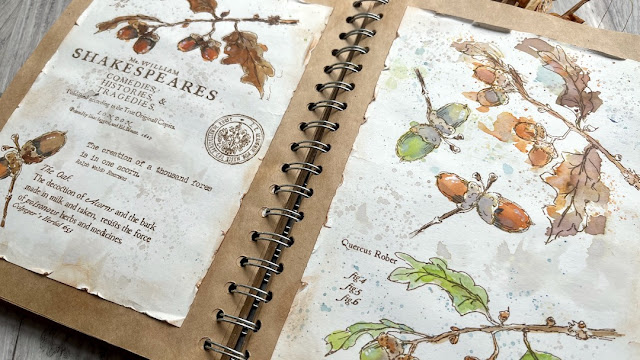































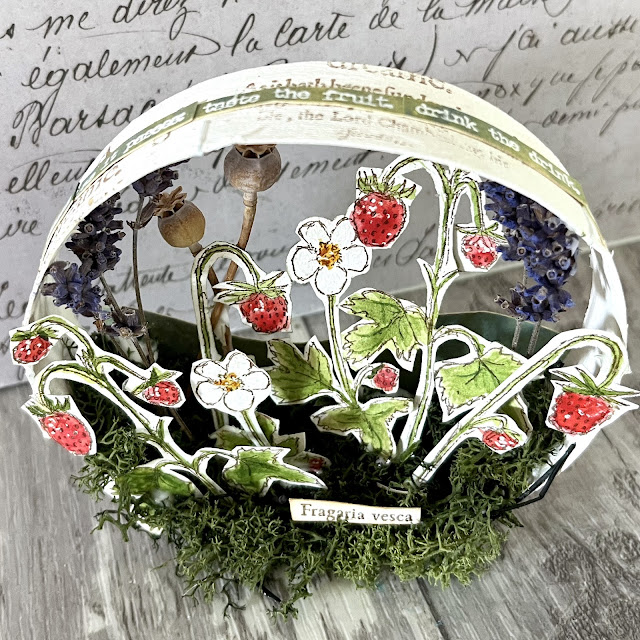



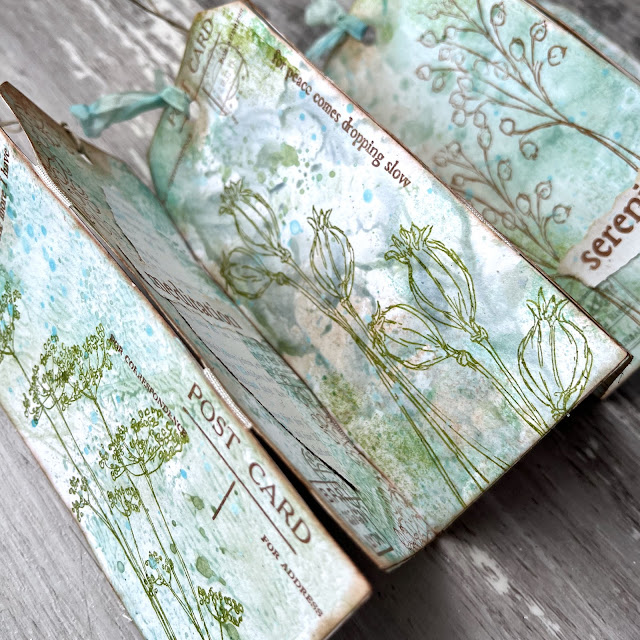
















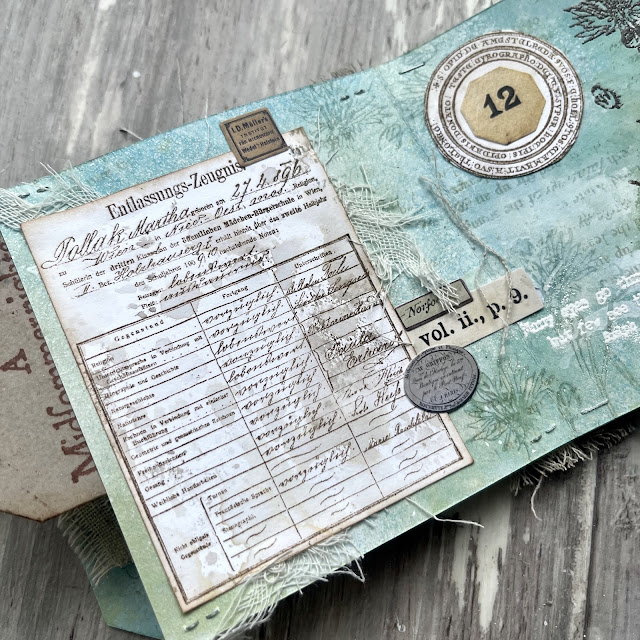




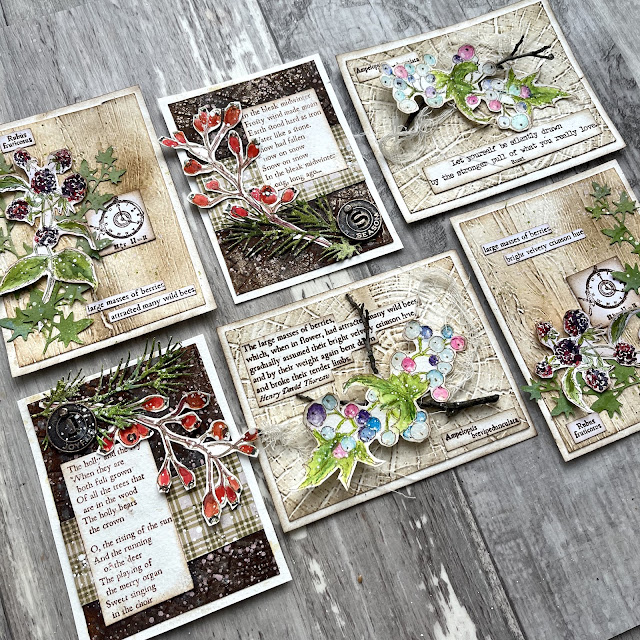
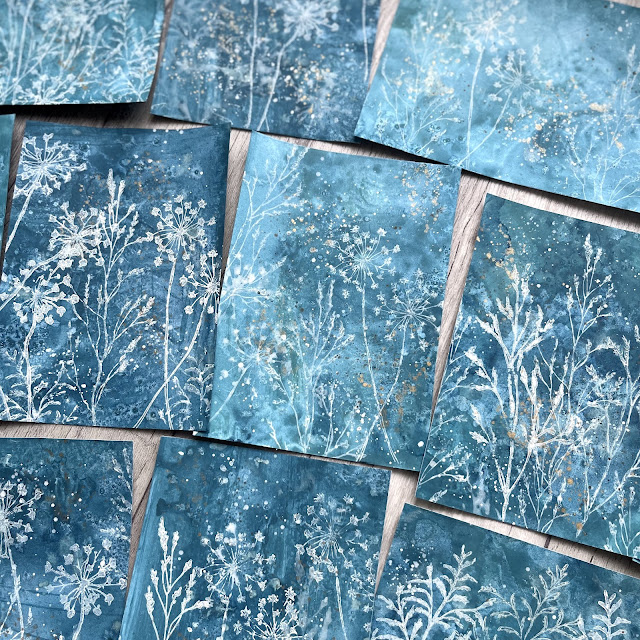



10 comments:
I so love Alison’s creations. She inspires me to be more free in my own creations.
What a fabulous post, so interesting to learn so much about Alison.
The Monet postcards were not just in her cot - they were in her pram as well. I remember having a fight with an older friend who said such things would over-stimulate her.....
What a delightful post! I thoroughly enjoyed learning more about Allison and her journey to becoming the artist she is today. I am always inspired by her work, and am happy she decided to share more of herself via You Tube.
It was lovely to find out more about Alison. I love her stamps and her work. She’s very inspiring! I love that Monet pictures were in her cot!
I have loved reading all about Alison's creative journey and adventures. She is one of the most inspiring artists I know. It was lovely to know more about her
What wonderful information and lovely creative inspiration from one of my favourite designers. It was lovely to read about Alison's journey and such a glorious amount of creativity in one spot is just so inspiring.
I love this so much
Your interview answers were so wonderful and interesting, I really inspired to seeing about your works. Your wonderful youtube tutorial is also very helpful. And what a beautiful your studio. Thank you so much. xxx
Fascinating learning more about this talented artist. She is so much fun and I really enjoy her you tube demos. As a mixed media artist myself I am learning new tricks from her.
Post a Comment